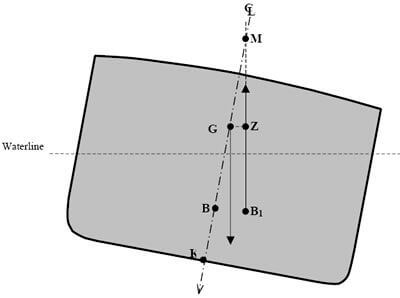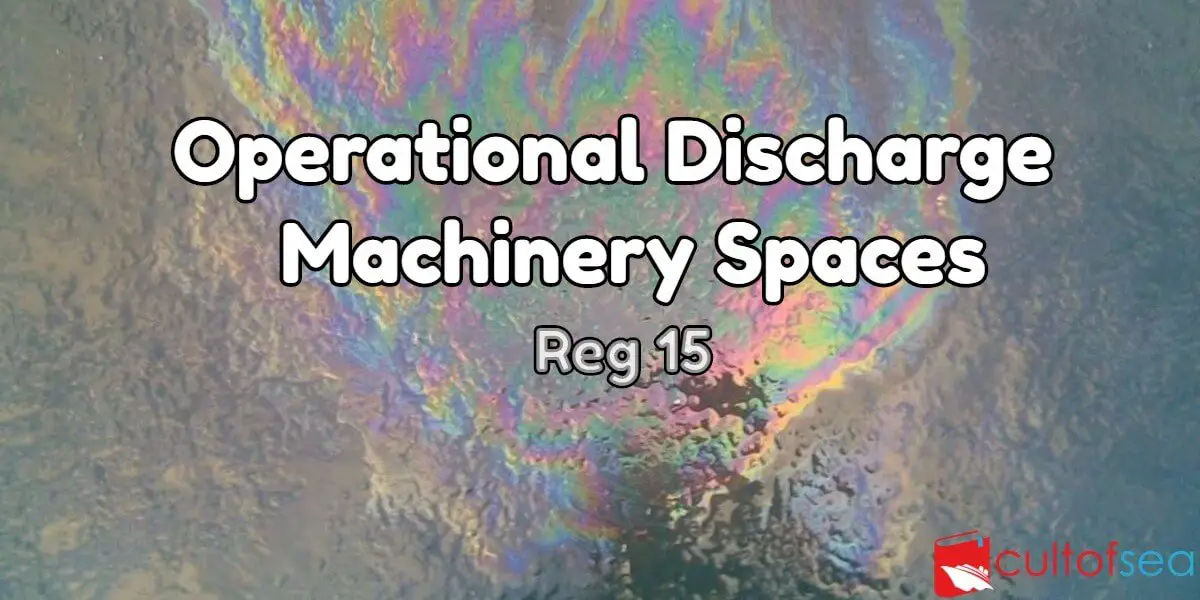Operating Principle Biological Sewage Treatment System DVZ-SKA- BIOMASTERThe Biological Sewage Treatment system consists of three watertight compartments and other equipment:1. Pre-treatment Tank2. Treatment Tank3. Disinfecting Tank4. Other Equipment (pumps, blowers, dosing pumps, level sensor)PRE-TREATMENT TANKThe "black water" is fed through the pipeline using gravity or a vacuum and flows through the sewage inlet into the pre-treatment tank, where intensive sedimentation and pre-treatment takes place using oxygen, a continuous supply of which is provided by a … [Read more...]
Intact Stability – Tankers
Annex I- Regulations for the Prevention of Pollution by Oil Chapter 4 - Requirements for the cargo area of oil tankers. Part A - Construction Regulation 27 - Intact stability 1 Every oil tanker of 5,000 tonnes deadweight and above delivered on or after 1 February 2002 shall comply with the intact stability criteria specified for any operating draught under the worst possible conditions of cargo and ballast loading, consistent with good operational practice, including intermediate stages of liquid transfer operations. Under all conditions, the ballast tanks shall be assumed slack..1 In … [Read more...]
Control of operational discharge of oil (Cargo Area)
Marpol Regulation 34 Discharges outside special areas Any discharge into the sea of oil or oily mixtures from the cargo area of an oil tanker shall be prohibited except when all the following conditions are satisfied:.1 the tanker is not within a special area; .2 the tanker is more than 50 nautical miles from the nearest land; (This is to make quite certain that the very small amounts of oil permitted to be discharged in compliance with requirements (.4) and (.5)will not reach the shore.) .3 the tanker is proceeding en route; (This eliminates the possible concentration of the permitted … [Read more...]
Discharge of sewage
Discharge of sewage (Annex IV, Reg 11 MARPOL) into the sea is prohibited, except when:1. The ship is discharging comminuted and disinfected sewage using a system approved by the Administration at a distance of more than 3 nautical miles from the nearest land, or sewage which is not comminuted or disinfected, at a distance of more than 12 nautical miles from the nearest land, provided that, in any case, the sewage that has been stored in holding tanks, or sewage originating from spaces containing living animals, shall not be discharged instantaneously but at a moderate rate when the ship … [Read more...]
Discharge Standards – Garbage Marpol Annex V
Garbage MARPOL Annex V - Applies to all vessels This table provides only a summary of discharge requirements under MARPOL Annex V. Find below under download section MEPC attachments. … [Read more...]
Control of operational discharge of oil (Machinery Spaces)
Regulation 15 Discharges outside special areas Any discharge into the sea of oil or oily mixtures from ships of 400 gross tonnage and above shall be prohibited except when all the following conditions are satisfied:.1 the ship is proceeding en route;.2 the oily mixture is processed through an oil filtering equipment meeting the requirements of regulation 14 (Oil filtering equipment) of Annex 1;.3 the oil content of the effluent without dilution does not exceed 15 parts per million;.4 the oily mixture does not originate from cargo pump room bilges on oil tankers; … [Read more...]
Special Areas under MARPOL
In Annex I Prevention of pollution by oil, Annex II Control of pollution by noxious liquid substances, Annex IV Prevention of pollution by sewage from ships and Annex V Prevention of pollution by garbage from ships, MARPOL defines certain sea areas as "special areas" in which, for technical reasons relating to their oceanographical and ecological condition and to their sea traffic, the adoption of special mandatory methods for the prevention of sea pollution is required. Under the Convention, these special areas are provided with a higher level of protection than other areas of the sea. Annex … [Read more...]




